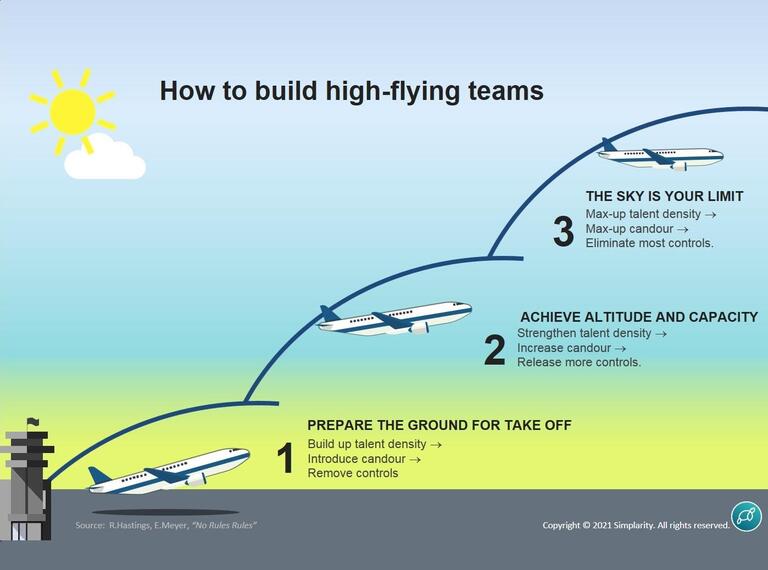
“I must be cruel only to be kind ”
Hamlet, William Shakespeare
The pace of innovation and disruption was high even before the pandemic, which only accelerated it further. How do you build teams that are be able to win and thrive in this environment, where all elements (be it markets, technology, competition, and customers) are constantly changing? Building high-performance teams is not for the faint-hearted and will require some tough decisions, but the prize is worth it. In this blog we talk about one approach, which worked for Netflix, and share some tips that may help you to create the right conditions to drive creativity and innovation.
In their inspiring book “No Rules Rules”, Reed Hastings (Netflix Founder) and Erin Meyer (professor and author of bestseller “The Culture Map”) discuss Netflix’s journey and share their insights how to build a culture of freedom and responsibility, which is the key component of Netflix’s success story.
Reed believes that these three elements – namely “Talent Density”, “Candour” and “Leading with Context” – play a crucial role in building high-performance teams.
However, to ensure a greater chance of successful change, it makes sense to approach it in phases.
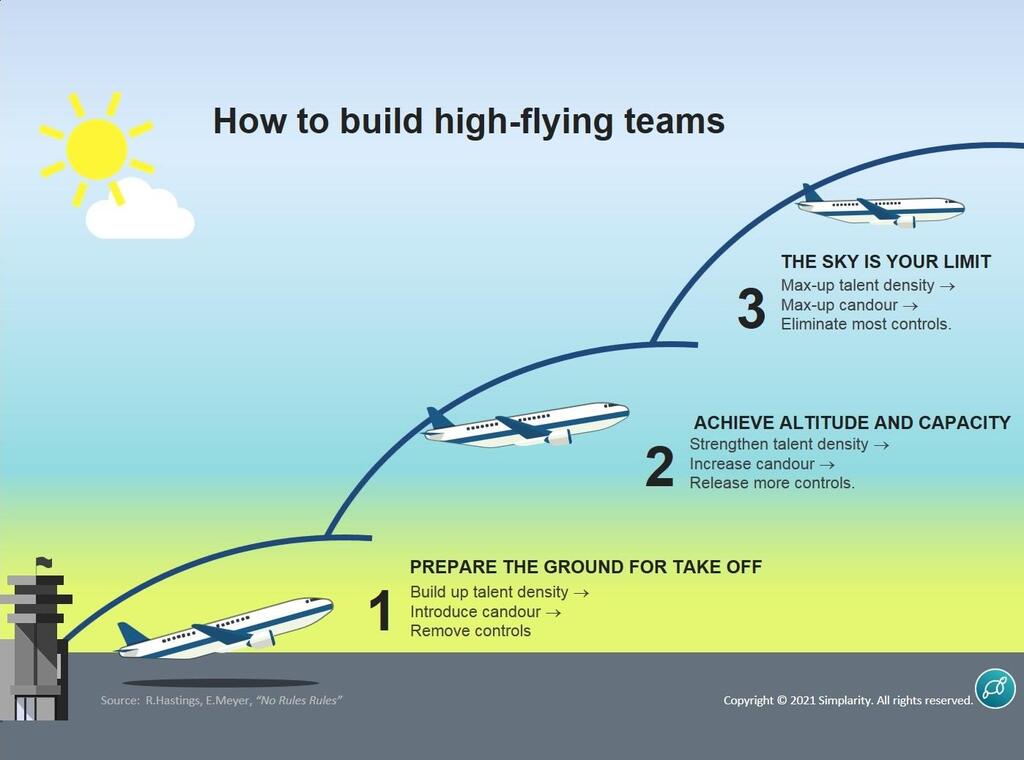
You should start with building “talent density” . It is easy to say, but how would you go about it?
One way is to take the approach used by top coaches in sport. Imagine your direct reports are a team of a sport players. Assess them along two dimensions: (1) “Collaborative Attitude” – the degree of collaborative attitude they show and (2) “Skills & Expertise” – how much skills and expertise they possess (see Fig.1).
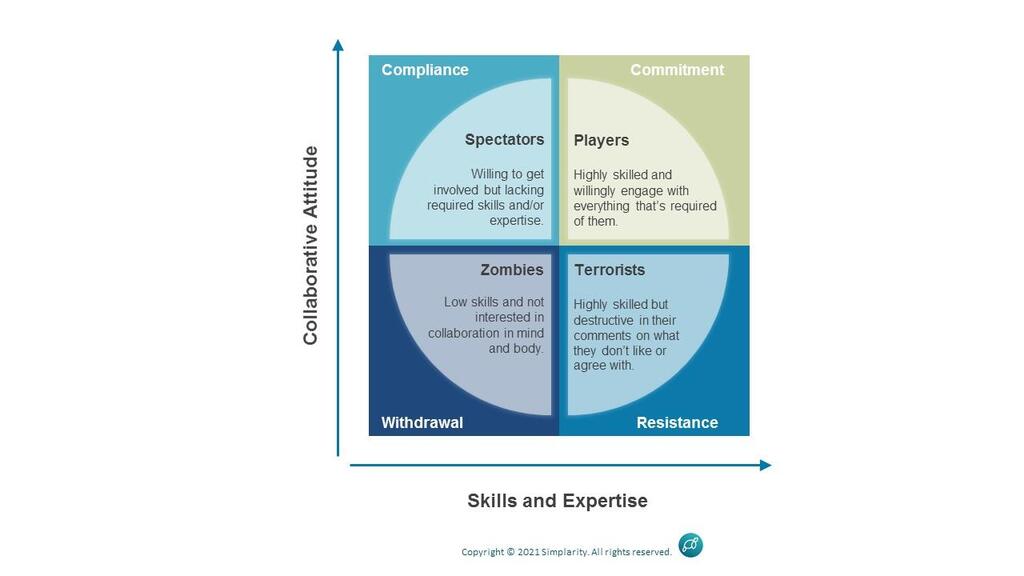
Figure 1. “Attitude” vs. “Skills” team member classification model (adapted from Ken Way, “Mental Mastery: Tried and Tested Techniques for Exceptional Sports Performance” ).
Ideally, you want to find all your team members in the “Players” quadrant – these are the highly skilled and very collaborative individuals who create the right team atmosphere and dynamics. However, you may find that some of your team members are the “Spectators” – while willing to get involved, lack required skills and expertise, so they cannot contribute much to the team that decrease your business’ performance by forcing others to work around them. Even worse, some may actually be the “Zombies” – these people not only lack skills but don’t show any interest in collaboration or any team communication that, in turn, drains energy from all around them (from managers and supervisors to other team members). The worst type to have on the team are the “Terrorists” . These people are usually highly skilled but destroy collaborative environment by constantly commenting on what they don’t like or agree with without offering any solutions or support. They are the people who can do serious damage to the team performance and can even drive your other collaborative talent to quit.
Your “Players” won’t be able to create and deliver great value in the environment, where you have “Zombies”, “Terrorists”, and “Spectators” in your team. To improve the performance, you will need to let go those who are not “Players”. This will create a better team environment and will create space for more talent to join the team. This approach sets you on the right trajectory to achieve talent density.
What next? With the team of “Players” you now can start encouraging candour, which will help your people develop their skills and expertise further and achieve outstanding results. While you may think that difficult feedback may not be received well, research shows that 96% of employees agree that corrective feedback improves performance and are 11 times more likely to prefer corrective feedback over positive feedback. However, you need to make sure that all team members share their feedback with a positive intent of what the recipient could do differently for sustainable, positive results. Moreover, the cultural differences need to be taken into account if you have multicultural team.
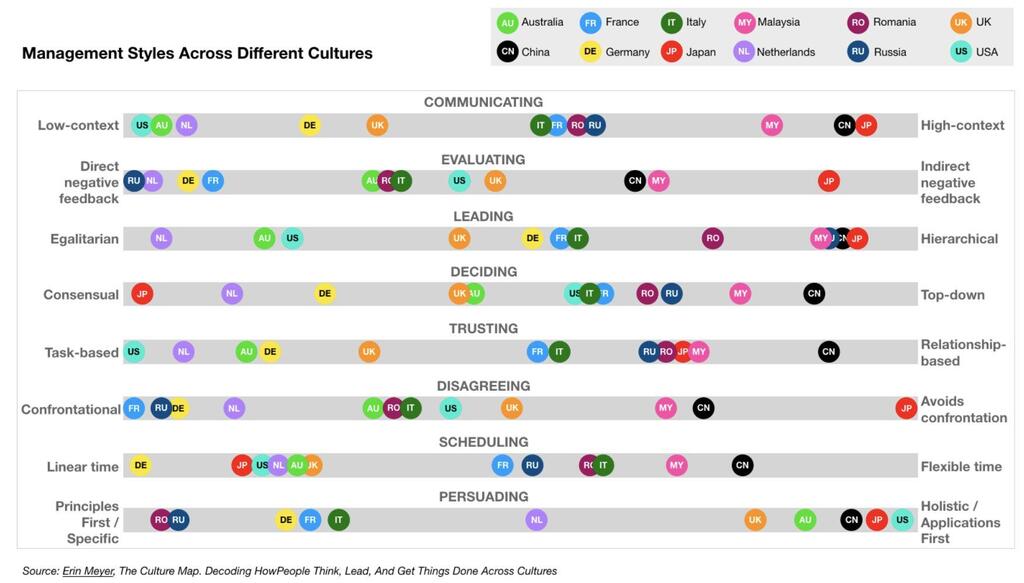
Only then can you start removing controls.
Does your organisations require a wide variety of controls (e.g. policies, approvals, procedures, etc.) when you have committed high performers?
That’s exactly the point Reed is making. By removing controls, in his case initially the vacation policy and travel expenses guidelines, he demonstrates trust to his team and giving them more freedom but also responsibility to make sound decisions by leading with context not control.
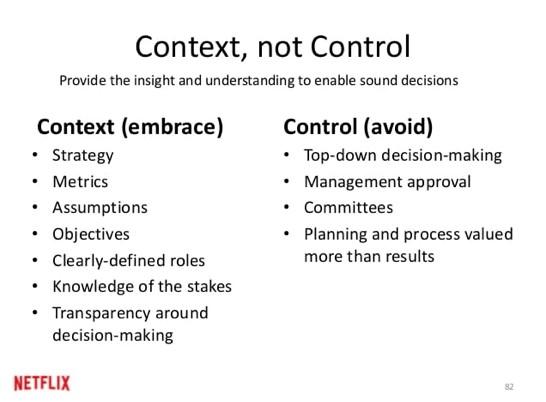
In Phase 2 strengthen the talent density by hiring and developing exceptional talent and recognising desired behaviour.
Does it mean that you always have to pay top dollar for top talent/players?
Fair pay is important but some would argue that other factors even more so. Does the salary not sit at the bottom of the Maslows Hierarchy of Needs, with love / belonging, self-esteem and actualisation positioned much higher?
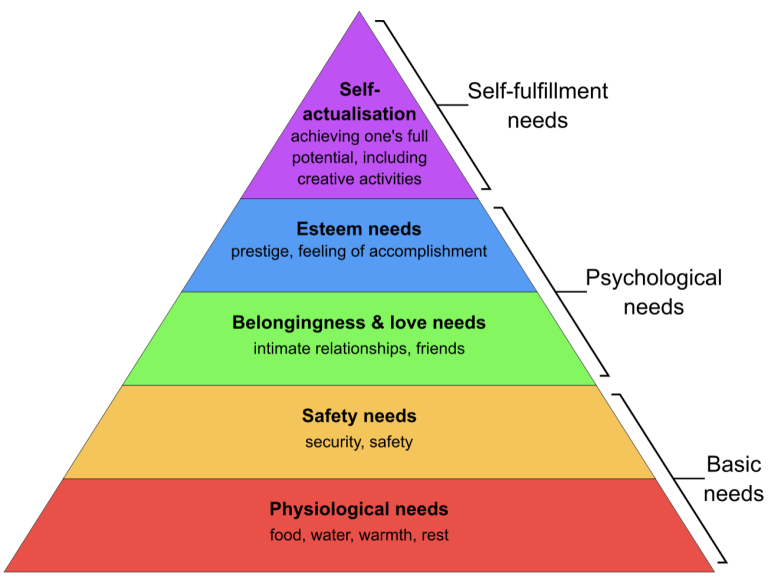
User:Factoryjoe, CC BY-SA 3.0, via Wikimedia Commons
Would it surprise you that almost 70% of employees in general, and 80% of the young generation, leave when they don’t feel appreciated or happy at work?
As Carl W. Buehner once said “They may forget what you said or did – but they will never forget how you made them feel.”
To build sustainable approach to talent density consider the whole spectrum of employees’ needs, particularly if your team consists of talented individuals with high aspirations. You may not always be able to achieve 100% retention, as some of your “Players” will inevitably leave for various reasons. However treated well, they are likely to influence positive reputation and image of your company, which in return will attract even more talent.
Now, with a strong team you can increase candour further by emphasizing organisational transparency and if your aim is to build exceptional teams – lead by example. Play open books, give and seek constructive feedback with a positive intent of helping your employees grow and flourish.
Continue to build a culture of trust by releasing even more controls by delegating approvals and matters requiring decision-making.
At this altitude, the sky is your limit – max-up talent density as well as candour and aim to lead with context . You won’t need to control your “Players” and tell them what to do. Instead, you give them the context, so they can make good, timely decisions.
And last but not least, don’t forget that your leadership style and soft skills such as emotional intelligence, teamwork, etc., are instrumental to successfully navigate your “aircraft”. Want to learn more about essential leadership skills? Follow us on LinkedIn for updates on our tutorial “The Leader of Tomorrow” due for release this autumn.
Copyright© 2020-2024 Simplarity Limited